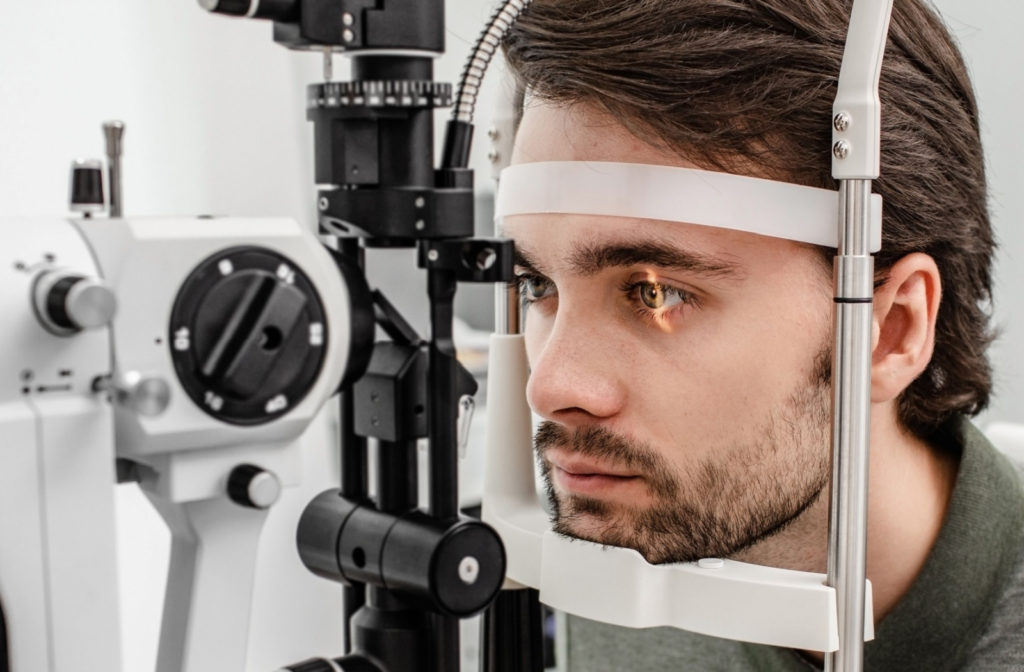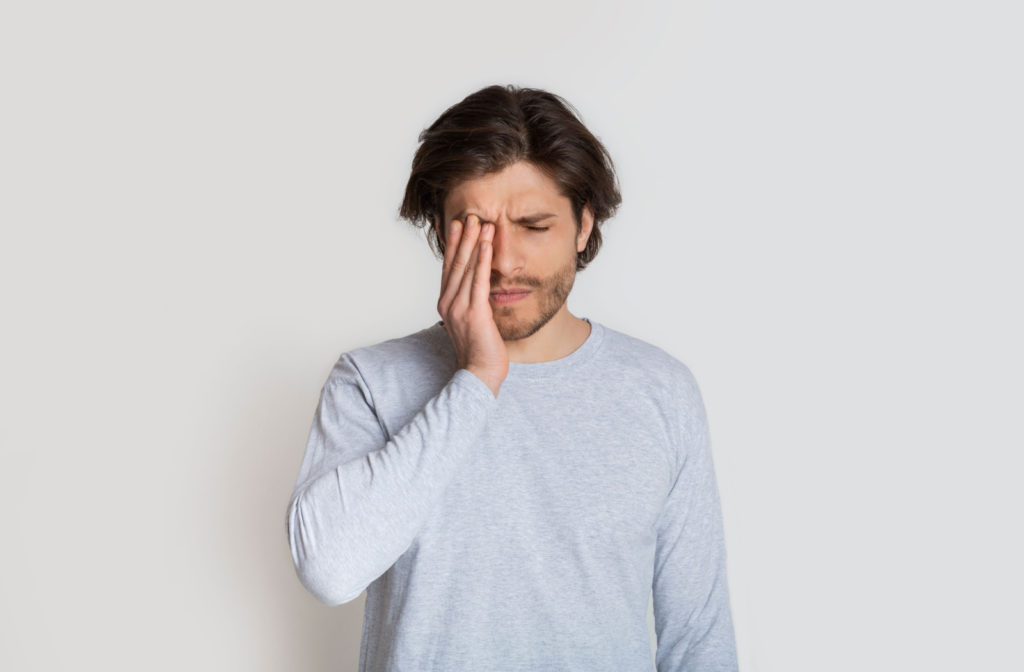Getting out of bed can sometimes feel like a chore, especially if your eyes feel dry and have a sandpaper feeling. An eye exam can help determine the underlying cause of your dry eyes.
But no matter the cause, your eye doctor can treat dry eyes with artificial tears, medicated eye drops, gentle heat technology, and essential eye nutrients to provide relief in the mornings and during the day.
What Is Dry Eye?
Your tears provide the eyes with lubrication, a smooth surface, and protect the eye from foreign debris and infection. However, when the eyes don’t produce enough tears or good-quality tears, tears can evaporate more quickly and not work as well as they should.
Causes Of Dry Eye
Several factors can contribute to the development of dry eyes, including:
- Aging: Dry eye becomes more common as people get older, as you produce fewer tears.
- Sex: Hormonal changes during pregnancy and menopause can increase the risk of dry eye.
- Environmental factors: Dry or windy climates or exposure to smoke or air conditioning can exacerbate dry eye symptoms.
- Medical conditions: Certain health conditions, such as systemic diseases, can increase the likelihood of developing dry eye.
- Medications: Some medications, including antihistamines, decongestants, and antidepressants, can reduce tear production or affect the quality of tears.
Causes of Morning Dry Eyes
Your eyes can betray you the moment you open them in the morning. But you’re not alone. There are several reasons for dry eyes in the morning.
Tear Quality
Tears have 3 components: water, mucus, and oil. All components are essential in tears. However, if the tear film lacks something, it can lead to an imbalance.
For example, if the tear film lacks water, it can lead to dryness; if tears lack oil, it can lead to increased tear evaporation; and if the tears lack mucus, tears don’t spread evenly over your eye surface. Poor-quality tears can lead to dry eyes in the morning.
Decreased Tear Production
The glands in and around your eyelids produce tears. A problem with the glands or a blockage in the oil or meibomian gland can result in fewer tears produced and morning dry eyes.
Causes of decreased tear production can include age, medical conditions, medication side effects, environmental factors, and reduced blinking at night. These can lead to less moisture spreading across the eye’s surface, potentially resulting in dryness.
Nocturnal Lagophthalmos
Nocturnal lagophthalmos is a condition where your eyelids don’t fully close when you sleep. The cause of nocturnal lagophthalmos can result from weakness in a facial nerve.
Myths & Facts About Managing Dry Eyes
Even though dry eye syndrome is a common eye condition, some misconceptions can affect timely diagnosis and management for long-term relief.
Myth: Dry Eye Is Not Serious
The truth is that untreated, excessive, or chronic dry eye can affect your quality of life and eye health. Without treatment, dry eye can damage or scar the corneal tissues (the clear front part of the eye), leading to impaired vision.
Myth: Dry Eye Only Results From a Dry Environment
The truth is that dry eye can result not only from dry climates or environments but also from factors such as age, health, medications, digital eye strain, low humidity, and long-term contact lens wear.
Myth: Artificial Tears Alone Can Treat Dry Eyes
The truth is that while artificial tears can replace moisture in the eyes, they provide a short-term solution. An eye exam and dry eye assessment can determine the underlying cause of your dry eyes for appropriate treatment.
Treatment & Management of Dry Eye
Treatment and management for dry eyes can depend on the underlying cause and severity of the condition. Most treatments look to address the underlying cause or a simple solution, such as changing your contact lenses.
Artificial Tears
Over-the-counter preservative-free artificial tear drops can provide temporary relief by adding lubrication to the eyes.
Prescription Eye Drops
Your eye doctor may recommend prescription medications to increase tear production or help reduce inflammation associated with dry eyes.
Lifestyle Changes
Lifestyle adjustments to reduce dry eye symptoms can include the following:
- Using a humidifier
- Avoiding prolonged screen time
- Blinking more often
- Taking regular breaks to rest the eyes
LipiFlow
LipiFlow uses gentle heat or thermal pulsations to the inner and outer eyelids to help unclog blocked oil glands for improved tear flow and quality.
It’s essential to consult your eye doctor for an accurate diagnosis and personalized treatment plan if you’re experiencing dry eye symptoms. With proper management, you can find relief from daytime dry eye discomfort and morning dry eyes.

All-Day Vision Comfort
The morning struggle with dry eyes doesn’t have to be a daily occurrence. You can banish dry eyes in the morning with a proper diagnosis of the underlying cause.
With personalized treatment and incorporating simple tips into your bedtime routine, such as using a humidifier, limiting screen time, and proper hydration, you can reduce dry eye symptoms and experience vision comfort. To learn more about dry eye symptoms, book an appointment with Queensway Optometric Centre.


